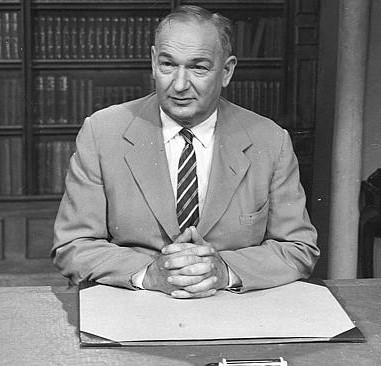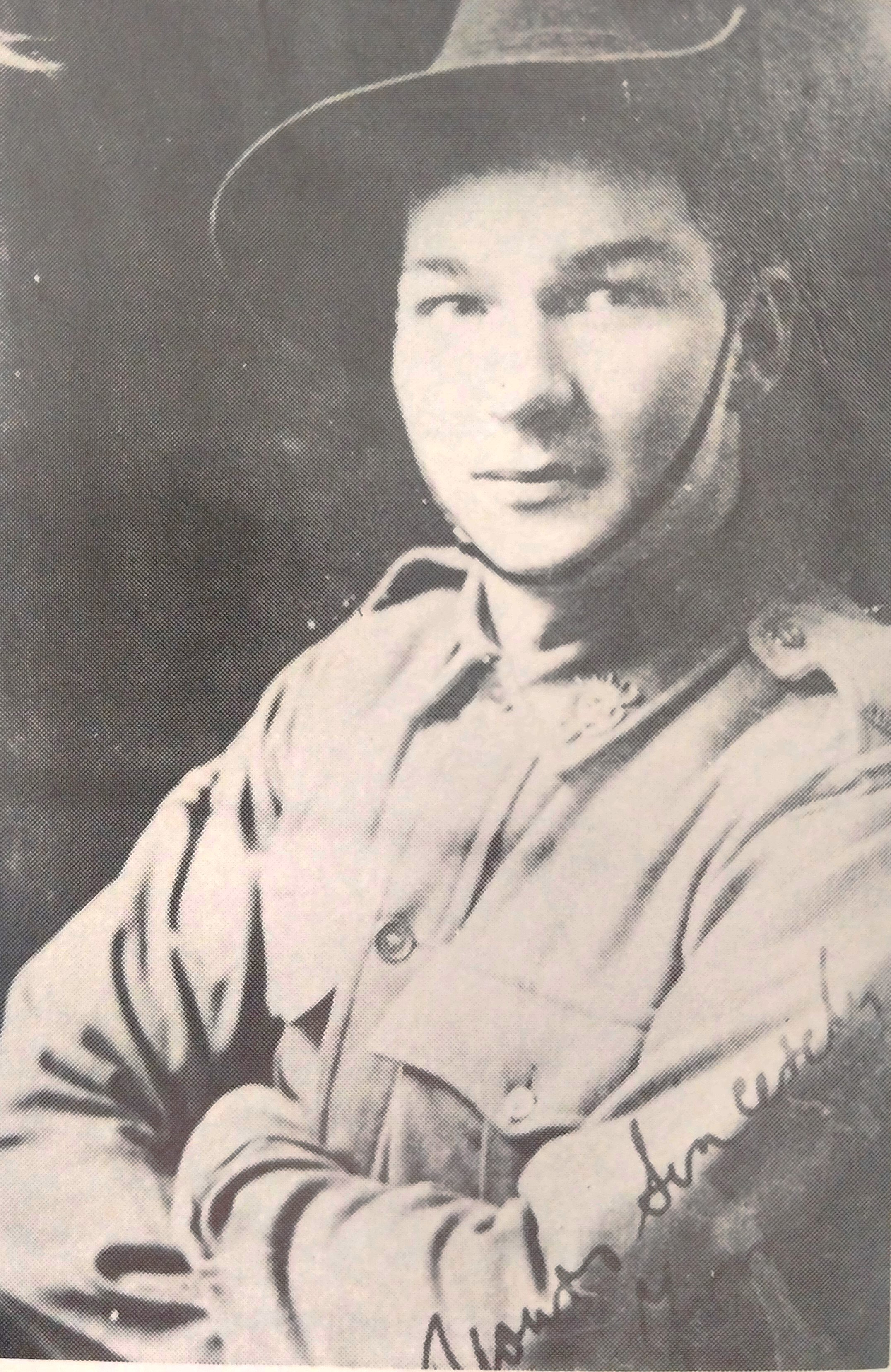Sir Thomas Playford IV
Sir Thomas Playford /sɜːr ˈtɒməs ˈpleɪfərd/ IV was a renowned South Australian Premier who served from 1938 to 1965, the longest-serving premier in South Australian history. He is credited with
| Thomas Playford IV | ||
 | ||
| Thomas Playford, South Australian Premier | ||
| Born | Thomas Playford Born July 5, 1896 Norton Summit, South Australia | |
| Died | Died June 16, 1981 (aged 84) Adelaide, South Australia | |
| Honorific prefix | Sir | |
| Order | 33rd | |
| Office | Premier of South Australia | |
| Term start | 5 November 1938 | |
| Term end | 10 March 1965 | |
| Predecessor | Richard Layton Butler | |
| Successor | Frank Walsh | |
| Political party | Liberal and Country League | |
| Spouse(s) | Lilian Anne Fairlie | |
| profession | Politician | |
| Nickname | Honest Tom | |
| Signature | ||
 | ||
industrializing the state during the post-World War II era, but his tenure also attracted criticism for being socially conservative. His policies aimed at economic growth were highly influential, though they were often seen as favoring industry over other sectors. He was also known for his complex political legacy, where his reforms were deeply embedded in South Australia's transition into a modern, industrial economy. His influence persisted beyond his time in office, even as the political landscape shifted towards more progressive governance under successors like Don Dunstan.[1]
Early Life
Childhood (1896–1919) Playford was born on July 5, 1896, at Norton Summit, Adelaide Hills, South Australia. The area was known for its fertile valleys but demanding terrain. Playford’s family was deeply rooted in the local community, which had strong religious values, mostly Baptist or Anglican. He attended school at Norton Summit, where discipline and the standards of learning

were high. Despite being left-handed, he was made to write with his right hand. He enjoyed arithmetic and reading, especially the Bible, excelling in sports.
World War I (1914–1919) Playford joined the 27th Battalion of the Australian Imperial Force (A.I.F.) in May 1915 at age 18. The unit was destined to acquire significant recognition and become a source of pride for many South Australian families.
He served at Gallipoli and later in France, where he participated in significant battles such as Messines, Pozieres, and Ypres. In November 1916, Playford was severely wounded by shrapnel, resulting in permanent hearing damage.
Despite the injuries, Playford remained dedicated to his unit and the war effort. His experiences in battle were described as influential on his character, particularly fostering his stoicism and strong leadership skills.
Political Career
Playford returned to Australia in 1919 and soon became involved in local politics and community work. His wartime experiences influenced his views and leadership style, which would later shape his long political career.
He engaged in debates and discussions, reflecting his strong views on social issues like prohibition, which were prominent at the time.[2]
In 1933 Playford entered Parliament in South Australia, part of the Liberal and Country League (LCL). His initial years were marked by growth in public speaking and political strategies, though he was not yet a central figure. Between 1935-1937 Playford, while still considered a backbencher, participated in debates and developed a reputation for his concise and practical contributions. His personality and focus on agricultural and public finance issues helped him gain recognition. Playford ran in the 1937 election as part of the LCL, and though the party won a solid majority, the victory was also marked by internal disagreements over issues such as betting shop legislation.
In March 1938, Playford was appointed to the Cabinet as Minister of Repatriation, Irrigation, and Commissioner of Crown Lands by Premier Richard Layton Butler. Butler saw Playford as diligent and reliable, especially in rural matters, giving him increasing responsibilities. Butler unexpectedly resigned after internal party struggles and legislative criticism, including from the betting legislation controversy. Playford was chosen as Premier by the LCL but initially believed his tenure would be temporary. Despite his uncertainty, Playford's premiership lasted 27 years, a length no one foresaw at the time of his appointed time.[3]
Premier
In 1938 Playford became Premier of South Australia after leading the Liberal and Country League (LCL). He promised a balanced approach to governance, focusing on representing all South Australians. Playford's immediate priorities were modernizing rural industries, improving public services, and carefully managing state finances. He worked closely with established institutions like the State Bank and Housing Trust, aiming for gradual reforms to make the state administration more efficient.[4]
He quickly attracted industries like British Tube Mills and BHP, encouraging them to establish operations in Whyalla. By 1939, Whyalla began its transition into an industrial center with shipyards and steel plants. Playford’s efforts were essential in bringing the Leigh Creek coal supply online, which supported the expanding industrial sector with energy. During World War II, Playford's focus shifted to war-related production. Munitions factories were developed, producing shells and parts for Bren gun carriers and Beaufort bombers. The Metrology Centre at Islington was established to ensure precision manufacturing, a key component of South Australia’s war effort.[5]
The year is now 1939 as World War II loomed, Playford started positioning South Australia as a key industrial hub for the war effort. He focused on attracting industries to the state, negotiating with companies like British Tube Mills and BHP to establish manufacturing plants in Whyalla. His efforts to secure Federal support became crucial as the war intensified. By 1940 Playford's policies were beginning to bear fruit. His innovations in public service and economic management were recognized for their efficiency. He worked closely with his ministers to ensure smooth governance, creating a cooperative atmosphere within his administration, which helped prepare South Australia for its wartime responsibilities. Playford secured a strong majority in the 1941 elections, gaining full control of the government. With this political mandate, he further expanded South Australia's industrial base, ensuring the state was ready to support the war effort with new factories and infrastructure. His practical leadership, focus on industrialization, and financial prudence solidified his early success as Premier.[6]
By the 1950s, Playford had overseen significant expansion. He secured tin-plate production in Whyalla by 1959 after lengthy negotiations with BHP, further solidifying the city as an industrial hub. His administration also attracted companies like Actil (textiles), Cellulose (paper), and Philips Electrical Industries, ensuring diverse manufacturing sectors. By 1965, South Australia’s population had doubled, factory workers numbered 120,000, and factory production value had soared to $1100 million. Playford’s efforts had successfully transformed South Australia from an agricultural economy into a modern industrial state, leaving a legacy of sustained economic growth and development.[7]
References
- Playfords South Australia, 1996, P.1.
- Sir Thomas Playford a portrait, By Walter Crocker, 1983, P.16-23.
- Sir Thomas Playford a portrait, By Walter Crocker, 1983, P.30-34.
- Sir Thomas Playford a portrait, By Walter Crocker, 1983, P.35-37.
- Sir Thomas Playford a portrait, By Walter Crocker, 1983, P.38-49.
- Sir Thomas Playford a portrait, By Walter Crocker, 1983, P.35-37.
- Sir Thomas Playford a portrait, By Walter Crocker, 1983, P.38-49.

